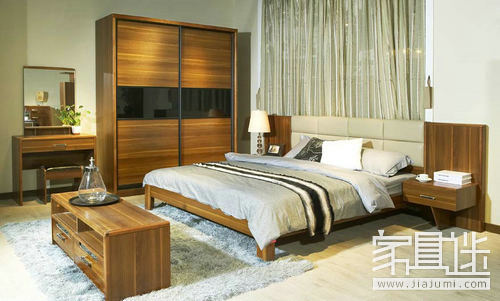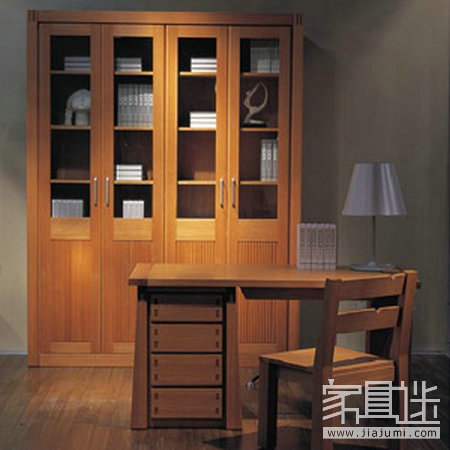Wood furniture, in a broad sense, refers to a combination of solid wood and wood-based panels. In a narrower sense, it means that the main frame and structural components are made of solid wood, while non-load-bearing or decorative parts such as side panels, tops, shelves, and partitions are constructed from wood-based panels that have been surfaced with veneer or laminates.
This type of furniture is commonly found in antique styles like American or European designs. The integration of traditional craftsmanship with modern techniques has led to the development of contemporary Chinese furniture that blends traditional aesthetics with national identity. This approach resonates with people’s desire for a natural, comfortable living environment and reflects a growing trend toward eco-friendly and sustainable design.

**Process Requirements for Wood Furniture**
The production of solid wood parts in wood furniture involves a lengthy and costly process, requiring strict control at every stage—from material selection and drying to finger jointing and assembly. If any step is not carefully managed, issues such as cracking, warping, or instability may occur. Most wood-based panel components are used for non-structural elements, often covered with thin wood veneers (around 0.5 mm thick), which allow for flexibility in color and style. Common species include cherry, walnut, birch, teak, and ash.
Using a 2mm thick veneer on wood-based panels offers a high-quality finish, with a smooth surface and strong adhesion. This method not only mimics the appearance of solid wood but also reduces material waste and lowers costs. The overall production process combines solid wood and panel processing techniques, involving steps such as drying, cutting, veneering, machining, and painting. The quality of the veneer application directly affects the final product's appearance, making it crucial to maintain tight control over this stage.
**Related Reading:** Key Points to Consider When Purchasing Wood Furniture
**Advantages of Wood Furniture**
1. **Artistic Style and Aesthetic Appeal**
Compared to solid wood furniture, wood furniture offers a balance between cost-effectiveness and visual appeal. It combines solid wood with veneer, creating a clean, elegant, and modern look. The natural textures and colors provide a warm, inviting atmosphere, blending traditional craftsmanship with contemporary design. This makes it both stylish and functional, offering a unique blend of tradition and modernity.
2. **Extended Service Life**
Wood furniture benefits from the durability of solid wood and the stability of materials like MDF. This combination allows it to adapt to different environmental conditions without cracking or warping, ensuring long-term use and reliability.
3. **Resource Efficiency and Environmental Benefits**
With the increasing scarcity of natural timber due to conservation efforts, wood furniture made from wood-based panels and solid wood helps reduce waste. These panels are often made from byproducts of the logging industry, improving resource utilization and reducing environmental impact.
4. **Ease of Recycling**
Unlike mixed-material furniture, wood-based panels are easier to recycle. Discarded wood can be repurposed into paper, fuel, or OTHER products. Processes like pyrolysis and combustion further enhance its sustainability, contributing to a circular economy.

**Disadvantages of Wood Furniture**
Despite its benefits, wood furniture has some drawbacks. Its synthetic nature can lead to a shorter lifespan compared to solid wood. Additionally, the use of adhesives in manufacturing can pose environmental and health risks if not properly sealed. Poorly made panel furniture may emit strong odors, indicating potential harmful emissions. It's advisable to choose reputable brands to ensure quality and safety.
**Future Trends in Wood Furniture**
Modern wood furniture is evolving to meet changing consumer needs. New designs focus on maximizing space efficiency, with more detailed internal storage solutions. Features like adjustable drawers, hanging rails, and specialized compartments enhance usability and organization.
Innovation in materials and construction methods, such as improved sliding mechanisms and rail systems, also enhances user experience. For example, some brands now use aluminum alloy guide rails for smoother operation and easier maintenance. These advancements not only improve functionality but also elevate the overall quality and brand value of the products.
As the market becomes more competitive, attention to detail and structural improvements will play a key role in building customer trust and loyalty. While design trends may become homogenized, the real value of wood furniture lies in its practicality and long-term performance. By embracing new technologies and materials, manufacturers can continue to meet the evolving demands of consumers.
Cleansing oil makeup remover,Cleansing cream makeup remover,Makeup remover gel,Instant emulsification makeup remover,The plant-based formula is less allergenic
Guangzhou Boxuanya Cosmetics Co.Ltd. , https://www.cosmeticsbxy.com